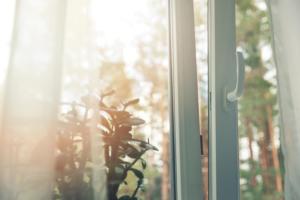Building Wellness
Bellevue has more than 100 certified green buildings, including high-rises, schools, hotels and shopping centers dedicated to sustainable architecture. Seattle adds more than 2,000 buildings to that count, and several hundred more exist in the surrounding cities. This widespread initiative to build eco-friendly communities is partially due to the dozens of city-led initiatives to create sustainable infrastructure. All this attention focused on how our buildings affect the environment raises a question: Why aren’t we focused on how buildings affect our own wellness?
A study from 2018 found that “wellness real estate” gained traction and became a $134 billion industry worldwide with a growth rate of 6.4 percent annually. The trend has continued to grow, and today, one of the greatest high-end real estate amenities is longevity.
How exactly can our houses and buildings aid in longer life spans and wellness? To start, a study published in the New York Times highlighted the dangers of living life mostly indoors, citing stale, unhealthy air and toxic chemicals as factors in our day-to-day and overall health. The World Health Organization published a study that found 80–90 percent of our health is tied to where and how we live, rather than genetics.
In 2014, Texas A&M released a study focusing on the benefits of a wellness community called Mueller in Austin. The study found that the design of the community spaces led to more walking and biking and social interactions between residents. Also, residents of the Mueller site shifted their diet, exercise and general wellness routines in a healthier direction once they moved into the community.
In Seattle, a team of experts are working toward a similar goal. The Seattle Housing Authority partnered with Seattle & King County Public Health and the University of Washington in 2019 to build 60 “Breathe Easy Homes.” These houses were built to decrease risk factors that cause asthma, including the following features: “house ventilation systems with air filtering, fresh air supply and heat recovery to improve air quality, linoleum flooring and recycled vinyl flooring to reduce allergens held in carpets, no off-gas trim and millwork to reduce urea formaldehyde bonding agents, no off-gas or volatile organic compounds cabinet construction, HEPA filter vacuums, walk-off doormats to remove dirt in homes, and construction sequences to include extra dry-out time and weather protection for building materials to reduce mold growth.”
It seems simple, but even these small changes in construction made a huge impact on the residents. To study the homes’ effectiveness, scientists at the University of Washington studied the changes in health for low-income adolescents with asthma living in the Breathe Easy Homes versus children living in standard residences. They found that residents experienced four fewer days with asthma symptoms every two weeks than the average youth with asthma. They also noticed that the proportion of Breathe Easy residents with an urgent asthma-related clinical visit in a three-month period decreased from 62 percent to 21 percent and their quality of life improved significantly.
The research is vast and continuing to grow, but what about those of us who aren’t looking to pack up and move out anytime soon? Using luxury wellness resorts, apartments and communities as inspiration, wellness real estate leaders are establishing standards that can be applied to many homes.
Breathe Easy
Stale, indoor air increases the amount of allergy-inducing dust mites, pet dander, mold and other toxins circulating through your home. To top it off, many of our household cleaners, air fresheners and candles contribute toxic chemicals to the air, effecting respiratory triggers.
If you don’t have the time or money to follow the Breathe Easy Homes method of a full-house reconstruction, there are a few things you can do today to help you breathe easier tomorrow. Regular cleaning with nontoxic cleaners will reduce dust and dander. Try reducing the amount of carpet or rugs in your home, purchase a vacuum with a HEPA filter so you do not re-pollute as you clean, and crack a window daily for a boost of fresh air.
Researchers at Harvard also suggest changing the filters on your air conditioners and heating vents more regularly and investing in ionic air purifiers, especially if you have a household pet that produces allergens daily. If you already own an air purifier, consider a dehumidifier for bathrooms, laundry rooms and basements to reduce mold growth.
Follow Your Rhythm
Circadian rhythms play a major role in sleep, cognitive performance and the immune system. Even though sleep is a key player in health and longevity, humans
constantly do things to affect their rhythms without even thinking about it. Even minor changes in routine, or looking at a cell phone screen too late at night, can throw off your rhythm.
Wellness architects use expansive windows and natural lighting to promote a natural circadian rhythm in residents. Designers wire house lighting technology to ebb and flow with the natural light from outside.
Several lighting companies have started promoting “Deliberate Lighting Systems,” which are light bulbs, usually controlled by apps, that cater to your circadian rhythm by changing color and intensity as the day rolls on. These systems have been proven to improve productivity, memory, cognitive function, mood and to build healthier immune systems.
If you’re interested in a house-light rewire, give the Philips Hue, Saffron Drift or the Lumos Light Therapy Lamp a try.
Community Standards
 Our health is intrinsically tied to our community in two ways: how we interact with the community, and how we interact with the people in our community.
Our health is intrinsically tied to our community in two ways: how we interact with the community, and how we interact with the people in our community.
Studies show that living among several people and sharing amenities like local pools and golf courses improves quality of life dramatically for residents of all ages and the quality of the amenities are improved when shared by a close-knit community that cares about their neighborhood.
While planners and developers are aiming to create housing communities with yoga studios, coffee shops, golf courses and spas within walking distance for optimal wellness, you can focus on getting to know your current neighbors and taking interest in community events happening near where you live.
Greens Before Screens
Wellness research has touted indoor plants for years because of their ability to absorb sound, reduce toxins in the air and calm our brains. While turning on your favorite TV show or music might help relax you after a long commute home, research shows that too much artificial noise and light can interfere with concentration, communication and your child’s wellness.
Research on tropical plants has shown that patterns in round and soft leaves release feel-good neurons in our brains when we look at them, while plants with spiky leaves, such as snake plants, don’t have the same benefits.


